How Small Companies Can Scale Quickly
Agility is often cited as one of the key advantages small companies have over larger competitors. But small businesses can be equally slow—even if for different reasons.
While massive corporations may be weighed down by bureaucratic burdens, small companies are often stalled by a lack of quality systems. Small-by-design companies, however, strike a balance. They streamline repeatable processes, continually refining for greater efficiency without crushing creativity under over-engineered infrastructure.
True agility requires building a platform from which your team can leap and fly. And these days, whether due to an unexpected huge new project or a difficult demand to scale back, every company needs to remain agile. Below are a few playbook tips based on what I’ve learned about flexibility in business.
Establish the right roles and responsibilities.
One joy of running a small business is the collaborative nature of the work. But clear roles and responsibilities are still required for efficiency. It’s how you ensure all aspects of a client project are handled well while staying clear of competing (and confusing) decisions.
Copying the corporate org charts of others simply may not be right for you. Instead, consider what roles and responsibilities make the most sense for your company’s goals and build from there.
In the early days of my own tech-forward branding agency, I directed both design and development. But in response to Covid-19, I shifted my focus to my greatest strengths. Now I serve as Director of Strategy (we have no CEO): defining our clients’ issues, identifying solutions and bringing resources together to do the job well. Then I step back and let the rest of my small team run the show.
Since creative direction and web development are central pillars of what we deliver, those roles are prioritized in our leadership structure. However, we’re far too lean for a VP of Operations, and our finances certainly aren’t complex enough for a CFO.
Your company’s framework should reflect its unique value. Create well-defined roles to lead what matters most for success, and spare yourself the other overhead.
Standardize your systems.
Not every small business needs a plethora of standard operating procedures (SOPs). But your small-by-design company can benefit from identifying repeatable processes, then standardizing them in SOPs that manage for efficiency and reliable results.
These are particularly important should you need to suddenly scale large or small. By taking time in advance to clearly spell out what you do and how you do it, new members are easily onboarded without a ton of individual training time. Should you lose a key member, their company knowledge won’t vanish with them.
Creating SOPs also builds confidence. Though you’ll revisit them as you evolve, systems ensure everyone knows where the ship is headed and how best to steer it.
Streamline staffing and training.
As a small-by-design business, you won’t hire and train hundreds of people. But you will acquire both employees and contractors, either temporary or permanent. So consider how to identify the qualities and experience needed for these additions. Decide early on where you’ll find them and how they will be selected and trained.
At my agency, for example, I don’t frequently hire people. But in preparation for those occasions, my creative director and I spent days of dedicated time to fully articulate our agency’s culture, values and methods.
Now when someone is onboarded, we hand them what emerged from those in-depth discussions, plus our SOPs. It may seem like a lot of work for an agency hiring only one to two new people per year, but as a result, new teammates don’t have to infer our culture and values from day-to-day encounters. Their full integration is greatly accelerated because it’s already been spelled out. In a world of increasing remote and hybrid work, this has become an even more effective and efficient method.
Develop your digital infrastructure.
My agency brings digital acumen to building brands that work, but I firmly believe that businesses largely succeed or fail based on the quality of their ideas and the capabilities of their people. However, even if technology is not the primary competitive edge for your small-by-design business, digital infrastructure can either empower or impede your best ideas.
What you need will vary widely, depending on your work. Perhaps a basic website with a contact form, reliable email and some simple cloud storage are all you require. Maybe your business could benefit from much more.
The key is to assess your present needs and anticipate how those may change as you scale to bigger opportunities. Then invest in quality digital infrastructure before those most challenging opportunities come along.
Nurture relationships before you need them.
Even in ordinary times, the work of any business depends on strong relationships. You rely on your banker and maybe the print shop down the street. You depend on city services and perhaps the coffee shop downstairs. A caterer, an ad rep, an office supply store. The co-work space you use for an office.
Some of these relationships will become even more important when a sudden challenge or opportunity comes your way. You’ll need responsive partners you can call in with urgency and trust they’ll get the job done.
These relationships cannot be cultivated in a crisis. No one wants a new friend who immediately asks for a difficult handout. So consistently nurture connections well before they’re needed. Send a spontaneous thank you gift, get to know the staff, celebrate their triumphs—smaller personal details will pay off greatly in the end.
Incorporate the full toolbox for success.
The future is uncertain. But even if you don’t yet see huge growth or radical shrinkage on the horizon, our times prove it’s important to be prepared to adapt rapidly (even if temporarily) to meet demands. I talk more about the “how” behind all of this in my new book Small by Design, releasing in May. For now, whatever may come, a solid foundation for flexibility will help you evolve for success.
Small Company, Big Ideas: How To Become An Effective Thought Leader
Intimidated by the idea of jumping into thought leadership? Perhaps redesigning your own thinking about it will help.
Thought leadership isn’t about delivering some grand ivory tower thesis or accumulating intimidating bylines from elite publications. Rather, it’s thinking more deeply about foundational ideas, leaning into leading conversations, connecting to others in a broader context and asking previously unasked questions.
Though it can help you grow, attract and nurture clients, thought leadership isn’t about convincing them of your worth. Instead of being a “look how good I am” billboard, it’s a way to get others thinking “look at how we can all do better.”
Effective thought leadership can also help you eventually raise your prices. It builds clout that justifies your higher fees because you’ve demonstrated you can spearhead significant dialogue and galvanize big ideas — the playing field equalizers for small-by-design companies.
Explore what you know (and want to understand better).
Start with the topics you’re truly passionate about — issues you’ve dedicated a great deal of time and energy to, just because you dig them.
Write from where you are. Don’t try to present a dissertation that anticipates every potential question — especially if you don’t have the answers yet. Sharing your excitement about what you’ve discovered (and admitting knowledge gaps) can humanize you. It also underscores how you’re paying attention, that you have a considered opinion and are open to new thoughts.
Then, beyond delving into what you know, explore what you desire to understand better.
Gradually, you’ll become a mini-expert in these areas. But from the very outset of your learning, write about it, share it and gain a reputation for discussing it. Circulate your expanding knowledge and demonstrate how you’re tweaking your perspective as you grow. 





Leading the field will be built on the foundation of these micro-topics you’re mastering along the way. Meanwhile, it can lead to openings for even bigger work and further learning.
Consider your story.
While you’re assembling your thought leadership portfolio, choose your topics and express your views with intention regarding your company’s arc. This content will be a lens into your organization, so use it as a magnet.
Everything you produce — from a mini-lecture to a manifesto — provides an opportunity for someone else to absorb it and say, “I like this person’s approach and the culture they are building.” So, how will each piece contribute to the story of who you are?
Don’t worry about being agreeable.
Do you hold a unique but challenging opinion on a topic? Discuss it!
Instead of presenting yourself as a rebel daring to step dangerously outside the walls of conventional wisdom, however, seize the chance to intelligently articulate your genuine beliefs, without compromise or apology.
Doing so can encourage discourse within your community of peers. And it’s a terrific vetting tool for potential clients. Whether they are aligned with your views or contentiously disagree, you’ll both understand if you’re the right fit for each other.
Play to your crowd.
Speaking of dialogue, keep your audience in mind. Consider who you’re trying to reach, what questions they’re asking and what challenges they’re facing.
Include your current clients in this. What questions do they repeatedly ask? What do you recite regularly from an internal pre-recorded talk track as you’re pitching to or onboarding each one?
Write those points down and publish them or deliver soundbytes in a panel. It saves you time and it demonstrates that you’re thoughtful, seasoned — a thought leader. It also shows you’re thinking about their pain points and how to solve them.
Consider where to share.
You don’t need a column in a high-profile publication to be seen as a thought leader. The endorsement of respected gatekeepers certainly helps if you can get it, but great ideas can serve your success however they’re presented.
Some options for sharing include:
• Posting it to your social network.
• Emailing it to your business contacts.
• Blogging about it on your website.
• Including it in your sales proposals.
• Including it at key points in your delivery process. For example, share a piece about stakeholder engagement at the kickoff of the discovery process to explain why you want to include the voices of other key stakeholders.
• Sharing it through platforms like Medium, Quora or Substack. Building up a smaller audience may lead to scoring bigger pitches later.
• Using it for pitching yourself to panels or conferences.
Move from thought to action.
Once you’ve established your most effective pieces, consider using them to:
• Open a conversation. After someone reads or listens to your thoughts, warm, inbound leads will come from people who are already impressed.
• Vet potential clients. If prospective clients aren’t well aligned with your values, your thought leadership will reveal that early, saving you both time and stress.
• Nurture prospects to become sales. If a lead is on the fence, your article may further the conversation.
• Guide a client in the direction of what will actually help them versus what they think they want.
• Close a deal when included with a proposal or contract to demonstrate your expertise.
• Support a successful client relationship or project with education. Your thought leadership can further their confidence in choosing you.
• Keep the conversation going with a past client who may need you again or refer you to someone else.
• Raise the standard of your quality and value. Show you’re more than selling deliverables; you’re a strategic leader steering them toward the best choices in the field. You’re not simply a vendor but a consultant helping clients figure out what they need — and delivering on it.
Overall, challenge yourself to get the most mileage possible from each piece by asking yourself how both its content and usage will align with and reflect your company culture — now and into the future.
By following this thought leadership playbook (like I did), your small-by-design company can soon make a big impact driven by the power of your ideas.
Stop Worrying About Your Digital Tools And Focus On Your Thinking
There are few things more challenging throughout the branding process than naming a business or product. It takes condensing a mountain of information into a few words that perfectly capture a brand that accurately encompasses who you are, and meanwhile acts as the first impression your brand will hold onto forever. It’s the thing that needs to stick right away, because if it doesn’t, it will leave you starting at a disadvantage. Daunting, right?
One of the most important steps is choosing a name. And when it comes to this decision, some brands are lucky enough to have a great name that naturally makes sense. Occasionally, using a creator’s name, a city reference, or a piece of industry lingo appropriately falls into your lap and perfectly fits the bill. That’s great. Congratulations, if that’s the case.
But, a majority of the time, once a product or brand starts to take shape, finding the perfect name can pose a more significant challenge.
While honing in on your name, there are a few factors worth considering to help you find the one that best suits you.
Clever names lose novelty.
A pun or gimmicky name may feel fun, but can easily grow tired for both you and potential customers. The fried chicken restaurant named “Fry Me to The Moon,” or dog groomer called “Indiana Bones” might seem playful at first, but will likely grow old fast as the novelty wears off. Instead, choose a name you can grow with: one that represents you in the way you want to be seen, and gives at least some insight into what you’re offering.
Your name should be smart. It should also be fun, if that’s what you’re after. But, don’t let getting caught up in cleverness distract from what you do.
Practicality should be a guide, not an obstacle.
When you start from scratch with naming, it can be tempting to go the route of simply choosing what’s available based on domains and social handles. Those are important factors to consider, but availability shouldn’t dictate your name.
If you settle on a name you love, and the obvious domain or handle has already been claimed, use this “setback” as an opportunity for creativity. Harley Davidson’s stock ticker symbol, for example, is ‘HOG’ because Home Depot already had the obvious choice of ‘HD’. Not only is this perfectly brand appropriate, it demands more attention thanks to a touch of well placed creativity. Move a little outside the box when necessary and make implementing the right name a priority.
Brainstorm. A lot.
Word association is a fantastic exercise for naming purposes. You’ll often find that even simply writing about your brand will open up your naming possibilities.
Ask yourself “What does my brand do/create?” and write down every word you can think of around those ideas. Then visit the thesaurus (or anagram tool, or translating service) to see what else appears. You may be surprised by what comes out of the exercise.
Trends die. Good names stick around.
You probably have a “designer” friend on social media who started something called “Rosemary & Birch” or some other combination of flowers and woodland animals with an ampersand dividing them. This is not a bad brand name. But it is a trendy, mostly meaningless one. It does not give potential customers any insight to what you do, can be easily ignored in a sea of sameness, and does no work on behalf of your brand to attract business.
While it’s okay to choose a name that fits with popular culture, consider how well the name will age. Not only is it unlikely to be the best name for you, it will date your brand with all the other trend followers that started brands around the same time. Picking a name solely for its trend value will drag you down and cause you to stand out less in the long term.
Say what your brand does. Or don’t. But, maybe.
This ambiguous piece of advice has a point. There’s no magic formula for naming your brand. Sometimes, the no frills dive bar on First Avenue should just be called the “First Avenue Pub.” Sometimes, calling it “Dr. McManimum’s Drink Emporium” will work better. There’s a different fit for everyone, which is why the experimentation and exploration phase of naming is so important. What matters most is giving your brand a name that is memorable, helps tell your story, and remains relevant as your business grows.
Brand naming in action.
My agency helped name JumpSpark, a Jewish teen group previously called “The Atlanta Jewish Teen Initiative.” Obviously, the original name is not a bad one. It defines who this group is for, their affiliation, and gives you a quick idea of who they are without the need for explanation. But for a Jewish teen organization aimed at getting adolescents involved in the community and excited about their faith and culture, “Atlanta Jewish Teen Initiative” was a mouthful that wouldn’t exactly bring the young folks in droves.
To start the naming process, we spent time with program leaders and participants, went through a branding workshop with them, and brainstormed together — both separately as an agency and in collaboration with our client.
Finally landing on the name JumpSpark took a significant amount of time and work, but it clicked almost instantly as an obvious fit once we found it. A “jump spark” is defined as “a spark produced by the jumping of electricity across a gap.” It’s a connection. A conduit for something much larger. And that’s exactly what the organization does — linking Jewish teens with their community, and filling in gaps that can spread opportunities to grow.
“JumpSpark” is a successful name for a few reasons:
-It’s short and punchy: a nice departure from the clunky previous name.
-It’s easy to remember and will stick with people after hearing it.
-It has a story that connects to what the brand does, and can be quickly explained if asked.
-It’s smart without going over anyone’s head and clever without relying on a puns or gimmicks.
Your ideal name is unique to your business, and the goal is to find one you can stand behind with confidence. Give yourself time to explore and sit with your options. Experiment. Share and test it out with others. Go outside of the box. Don’t hitch your wagon to what others are doing. Make it unique, but definitive. And finally, it may sound corny, but have fun.
This is your brand. It’s going to grow and evolve with you and should be something you truly love. Take time to enjoy and embrace the process even if it feels long and arduous. You and your brand will appreciate the effort in the long run.
Converting Your Clients Into Salespeople (So They Can Sell Your Work For …
Let’s face it: Great creative work often gets derailed because a key stakeholder who you’ve never met doesn’t get it or just really never liked the color orange. I’m not talking about agencies pushing self-indulgent conceptual flourishes that feed our own egos and win us awards. I’m talking about bold creative concepts that your best research and expertise tell you will indeed support your client’s goals — if only your client’s stakeholders will believe in them enough to step outside their comfort zones.
In almost any organization, there are layers of decision-makers with the power to veto your ideas. However, you often won’t be in the meetings where your concepts are presented to these stakeholders, and you’re likely not even the best person to present them. It’s all on your client to present your work, explain your thinking and make the case for why they should approve it.
Preparing your clients to sell your concepts is the difference between getting 80%-90% of your best, boldest ideas approved and getting only 50% of them approved. Here’s how my agency gets the green light from stakeholders for our most daring approaches.
Know Your Audiences
My agency did a rebrand and new digital experience platform (DXP) for an agricultural, state-funded college founded in 1908 in Georgia. Our client was the college’s CIO. After interviewing key stakeholders during discovery, we knew we had to celebrate the college’s long history while evolving its brand to work better in the digital age. So we visited the archives in the school’s library, scanning yearbooks, farmer’s guides from the ’40s, and newspapers from throughout the college’s history.
To prepare the CIO to present the new brand, we developed a presentation deck that included some of the scanned archival material and talking points explaining how the college’s history had inspired the new brand. For example, the new font was ADA-compliant, legible at small sizes, and had a flexible web font available. But we pointed out that it was created the same year as the college, and we included scans of century-old print materials that had used it.
Takeaways:
Identify all stakeholders who will influence the decision. Ask your client who else in the organization’s hierarchy will weigh in on the final decision. Ask also if there is a broader community whose opinions will be influential.
Include them in the discovery process. Invite those stakeholders into your initial discovery workshops or interview them. Ask about their goals, values and priorities.
Genuinely reflect their opinions in the work. You already create work to connect with target audiences. Treat stakeholders as additional audiences, creating work that they’ll connect with too.
Help Them See What You See
When the general manager of a residential resort came to us for a rebrand, we included the homeowner’s association (HOA) in our discovery workshops. We asked for their input and got their buy-in on the long-term goals the new brand would support.
As the time approached for the general manager to present the new brand, we sent a photographer to capture beautiful images of the community, including all existing signage. We edited these photos to show how the proposed new brand would actually look in their community, then included them in a presentation deck with talking points that referenced the goals they had agreed upon.
Takeaways:
Go the extra mile with mock-ups. As creative professionals, we’re good at imagining experiences we haven’t yet created. Stakeholders may need help to do the same. Equip your client with mock-ups that bring the proposed experience to life.
Tell them how you applied their ideas. Stakeholders may not see how their ideas are reflected in your work. Prepare your client to make it clear. “In the workshop, you said you wanted our new brand to _____, and that’s why the agency chose _____.”
Rehearse And Keep It Real
As I write this, we just launched a major rebrand of a Jewish music festival. The organization had expanded its mission to include the intersection of Jewish music and culture with the other music and cultures of the South. The executive director wanted a new name and brand to reflect this.
However, the organization’s fiscal stability relied on legacy donors who had supported the organization as they knew it for more than a decade. The new brand couldn’t alienate these supporters. Donors wouldn’t be sold by promises of better SERP rankings and conversion rates. Their motivations were emotional, so we prepared the executive director to tell a stirring story about the history of the organization and how they were passing the torch to this new generation.
We had him practice presenting to us, and we took note of where he seemed most at ease. For points that seemed harder for him to present, we didn’t coach him. Instead, we revised until they flowed naturally from his authentic enthusiasm.
Takeaways:
Keep it real. Your clients will present most effectively when they’re genuinely passionate about what they’re saying. Build their presentation around their authentic enthusiasm, not what’s most interesting to you.
Rehearse and revise. Ask your clients to practice presenting your work to your team. They’ll feel more at ease when they present to their stakeholders, and you’ll be able to identify which ideas they can present with authenticity and ease. Edit out anything that sounds forced or false in rehearsal.
The Satisfaction Of Doing Your Best Work
As creative professionals, we want more than to trade design and development for dollars. Most of us want to serve our clients well with our best ideas, and we take great pride in those projects where clients let us do our very best work. Bank deposits don’t make up for the disappointment of good ideas denied approval in favor of mediocre alternatives.
So if you want to feel that satisfaction more often in a creative profession, don’t complain about the stakeholders who “just don’t get it.” Help them see your vision by preparing your clients to sell.
Small Businesses Can Tell The Tale Of Big Success (If They Think About T …
Stories create meaning and bind us to each other. Even Don Draper knew that the best advertising starts with a story. Stories are also the great equalizers of entrepreneurial endeavors — particularly when connecting with clients.
While it’s true that large companies can sometimes lean on numbers to sell their services, as a small-by-design company, each project you undertake should serve a larger story: one that conveys who you are, what you’ve accomplished, the challenges you’ve conquered and how you can, therefore, uniquely deliver on your clients’ expectations.
Telling that story in an authentic, intentional way — one that speaks to the needs and ambitions of your clients — can help them understand how you alone are right for the job, regardless of the size of your workforce or annual gross revenue.
For this to work, you need each project to count. And for that to work, you need to know your own story first.
Start with the arc.
Many businesses operate like this: establish a basic brand with leaders, employees and a central location, then utilize those elements to provide a service. The company executes, collects the fees, then moves on to the next undertaking with little connection or progression.
This is similar to how TV shows used to work: create some characters, place them in a setting and then write episodes within that realm relatively unconnected to each other. It’s okay if you missed the last Happy Days or The Brady Bunch episode. The gang operates pretty much the same each time. 

Now consider shows like Breaking Bad or Schitt’s Creek. Each episode is clearly built upon what had come before and supports where the show is going next. The characters’ transformations unfold with every season. This happens because the broad strokes of the full story arcs were probably known before the first day of filming. And that is an important part of each show’s success.
Companies of all sizes can use this tactic, but for small-by-design companies, storytelling in this way is essential for sustainable success.
For example, one of my agency’s stories is that we are champions of accessible website design that makes the internet better for everyone. We insist on using this approach on every project we do, even when the client isn’t concerned.
Here’s how you can use storytelling, too, through the work that you do.
Plan a story your clients will tell.
Your clients are your very best storytellers, so craft a narrative arc that will be clear to them. Identify it, outline it and call it to their attention regularly. Don’t just do the work; show them how the work fits into your larger story.
For example, rather than building websites for clients that simply connect to a few of their other systems, tell prospects about the journey their customers will take through their new digital experience platform. Instead of simply updating pattern libraries and language, inspire prospects with a story about the evolution of their brand.
Demonstrate your awareness of the interconnected implications of each task. Know that your project is larger than the sum of its parts — and communicate that sum consistently. That’s the story you want to tell, but it’s also what you want them to tell when you’re done.
The work you’re doing for them will be a powerful way to underscore this narrative.
Cast your story well.
Plot is nothing without characters. So, populate your story with precision. Is it the one where you work with both Fortune 500 companies and smaller, local ones? If so, what’s their commonality? Or perhaps you’re the hero of environmental issues? Startups? Higher academia or independent, educational organizations?
The companies you work with will be the important characters in your business’s story. Carefully consider the thread that connects them to each other. And then choose the projects and relationships that will reinforce it.
Choose storylines that you want others to make real.
The stories you tell will influence not only your company’s path but also the work your people do and how they grow.
Let’s go back to my agency’s story about accessible website design. Because I mapped out that story for us, told it again and again, and live it in the work we do, one of my developers has studied accessible design deeply and has even become an expert in it. He now challenges me to push our projects even further toward universal accessibility. I told the story, but he’s making it even more real.
My team now not only manifests the story but, through their dedication, is helping it expand. By taking it on themselves, their expertise grows and we, consequently, deliver more value to our clients.
Write down the conclusion before you start.
In fact, write it down before you accept the project. Identify your fairytale ending ahead of time: “We were able to achieve X for the client by doing Y in Z time.” Work toward that powerful conclusion every step of the way.
If you aren’t able to summarize this vision at the start, consider why you are doing the project in the first place. If the answer is, “This one pays the bills,” that’s okay. But there should be an inverse relationship between what you charge and how much a project contributes to your company’s story arc. If you have a project that’s primarily about money, identify how that money will help your business’s story.
Keeping the arc in mind (telling it and retelling it — through your messaging and your work) will align all projects to your benefit. It will help you focus on what deliverables to offer and which new projects to take next.
Starting with the story — and staying true to its arc — will not only help you land a happy ending. It may even open the doors for an even higher-budget sequel.
How To Build Resilient Client-Agency Relationships In An Age Of Uncertai …
With the decline of the agency of record (AOR) model and the median tenure of CMOs at major U.S. consumer brands having fallen to less than three years, conventional wisdom says that client-agency relationships have a natural “lifespan.” I often hear agency leaders say it’s about three years. Get in, do good work, make some money, then move on. Churn. Burn. Repeat.
But when you consider all the cost and effort that goes into winning a new client, isn’t it worth it to build a relationship that can last? And isn’t it more rewarding to invest in a client’s long-term success?
One of my agency’s clients has gone through three ownership changes, three CEOs and a host of marketing leaders in the seven years we’ve worked with them. We’ve never been their agency of record (they don’t have one). I know there are no guarantees that this relationship will endure, but the relationship’s longevity is not an accident.
Here are seven ways we build resilient client-agency relationships that keep our clients coming back for more.
Measure As You Go
At the start of every project, give your clients a vision of how it will succeed. Then, as much as you possibly can, document and demonstrate that success with data.
In the early days of the COVID-19 pandemic, we took on a new client that wanted help with their website. With in-store sales flatlining, they desperately needed to do better online. I told them that their new website would grow their online revenue by improving their lackluster conversion rates, and I immediately started tracking this data so I could prove it.
Bring Them Ideas They Didn’t Ask For
Don’t just do the project you were hired to do. Bring clients new opportunities for growth that will support their goals and vision. Surprise and delight with ideas that are unexpected, thoughtful and fun.
Research your ideas well before you present them and demonstrate that you understand their business. Suggesting something risky is perfectly fine, but present it with solid risk analysis and measurable rewards.
This isn’t simply upselling. It’s showing your client that you’re thinking more broadly about their business success even during the hours you aren’t paid to do so.
Build Relationships Beyond The Account Manager And CMO
A client-agency relationship is fragile when it’s mostly between an agency account manager and a client CMO. For a resilient relationship, find opportunities for everyone on your team to work directly with the client. And build relationships beyond the CMO — with their internal marketing team, the CEO, and anyone else who might later advocate for your agency.
Your deeper collaboration with the client will help you do better work. And when leadership changes or new contract decisions come along, you’ll be that whole team of people who everyone has collaborated with and (hopefully) likes.
Create Raving Fans
Develop and nurture lasting relationships with the people who love your work most. Understand what they need and help them succeed. Lift them up and invite them to share in your successes.
When I’m asked to give an interview to a media outlet, I look for opportunities to brag about my clients or even pitch them as additional sources. When I’m asked to speak at conferences, I often propose to bring my clients onstage with me for the conversation. I try to evangelize for my clients, to lift them up as they lift me.
These raving fans become your best ambassadors and advocates. They’ll protect your longevity with existing clients and help you win new clients too.
Partner With Their Vendors
Work well with your client’s other vendors so that, together, you can serve the client better. Go beyond basic coordination of services. Get to know them if you can. Become a key part of a collaborative team, not just another isolated and replaceable service.
As a bonus, you may find that the other vendors bring you new work with their clients. (And you should do the same for them.)
My agency has developed strong working relationships with several specialty digital service providers, including an online ticketing service, restaurant menu and ordering services, and a highly respected WordPress-managed host. With these partners, we’re able to offer clients comprehensive, integrated solutions, and each of us works to help the others succeed.
Surpass With The Sequel
With each new client project, ask yourself: “How can the sequel outperform our previous success?”
One of my agency’s clients wanted to build a promotion around a branded national holiday. The first year, we did a photoshoot and developed some new digital content. The next year, we secured a relevant URL for them and got them up to No. 3 on search results for the event. This year, we pitched them a branded video game.
Complacency will kill any client-agency relationship. No matter how well your client loved your previous work, doing more of the same won’t be good enough. Show them that there’s still more to your agency than what they already know. Entice them to stick with you and see what else you can do.
Above All, Show Them You Care
Do you care about your clients’ success? About the profitability of their companies, the achievement of their purposes and the well-being of their people? Let your clients see that you love what you do. Show them that their success means a lot to you.
I love helping my clients tell their stories. I care a great deal about the people I serve. I want them to succeed and do well. These are meaningful relationships to me, and that’s something my clients know.
If you feel the same about your clients, dare to tell them. Commit to showing them, over and over. It may be what keeps the relationship going for many more years to come.












